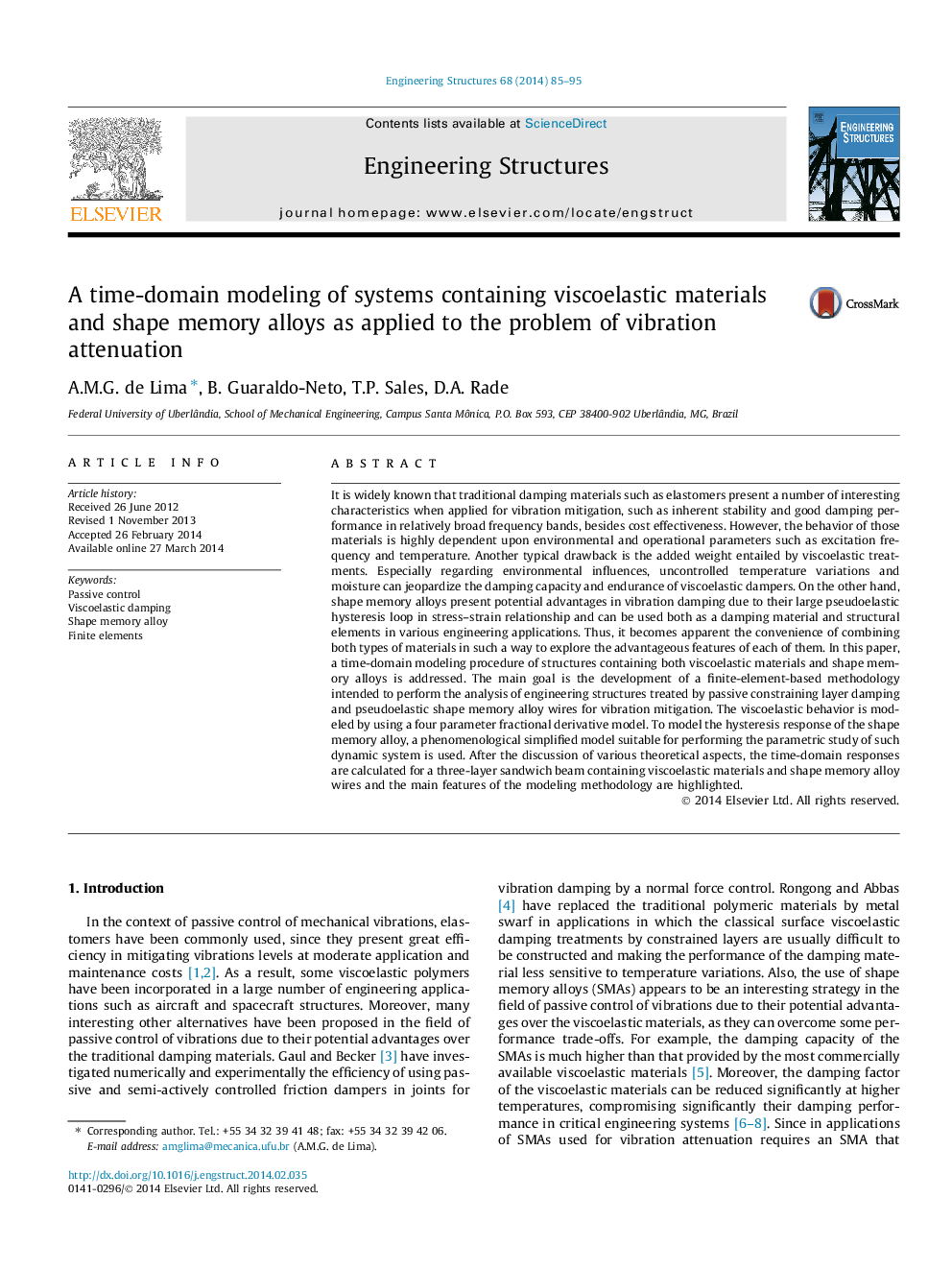| کد مقاله | کد نشریه | سال انتشار | مقاله انگلیسی | نسخه تمام متن |
|---|---|---|---|---|
| 266780 | 504377 | 2014 | 11 صفحه PDF | دانلود رایگان |
• A strategy to model systems with viscoelastic and SMA for damping increasing.
• A strategy to solve the non-linear equations of motion in the time-domain.
• Performance evaluation of the damping materials when the temperature changes.
• Advantage in using both materials in order to mitigate the vibrations levels.
It is widely known that traditional damping materials such as elastomers present a number of interesting characteristics when applied for vibration mitigation, such as inherent stability and good damping performance in relatively broad frequency bands, besides cost effectiveness. However, the behavior of those materials is highly dependent upon environmental and operational parameters such as excitation frequency and temperature. Another typical drawback is the added weight entailed by viscoelastic treatments. Especially regarding environmental influences, uncontrolled temperature variations and moisture can jeopardize the damping capacity and endurance of viscoelastic dampers. On the other hand, shape memory alloys present potential advantages in vibration damping due to their large pseudoelastic hysteresis loop in stress–strain relationship and can be used both as a damping material and structural elements in various engineering applications. Thus, it becomes apparent the convenience of combining both types of materials in such a way to explore the advantageous features of each of them. In this paper, a time-domain modeling procedure of structures containing both viscoelastic materials and shape memory alloys is addressed. The main goal is the development of a finite-element-based methodology intended to perform the analysis of engineering structures treated by passive constraining layer damping and pseudoelastic shape memory alloy wires for vibration mitigation. The viscoelastic behavior is modeled by using a four parameter fractional derivative model. To model the hysteresis response of the shape memory alloy, a phenomenological simplified model suitable for performing the parametric study of such dynamic system is used. After the discussion of various theoretical aspects, the time-domain responses are calculated for a three-layer sandwich beam containing viscoelastic materials and shape memory alloy wires and the main features of the modeling methodology are highlighted.
Journal: Engineering Structures - Volume 68, 1 June 2014, Pages 85–95
